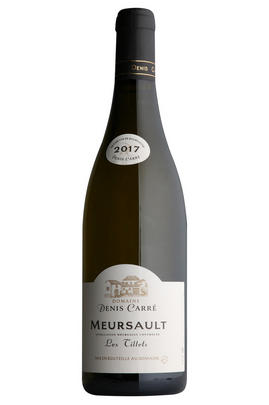
About this WINE

Domaine Denis Carre
Denis Carré did not inherit any vineyards, but – having harvested grapes as a teenager – he decided he wanted to make wine. He began renting vines, initially some Gamay and Pinot for three barrels of Passetoutgrains, while working in a garage in the evenings to fund his winemaking. He and his wife, Bernadette, slowly but surely added to their holdings, and the estate now totals 14 hectares across the Hautes Côtes and Côte de Beaune. Their children, Martial and Gaëtane, have been involved full-time since 2008, and now run the domaine.
Tucked away in Meloisey, in the Hautes Cotes de Beaune, this small family domaine has so far remained relatively under the radar, but the recent change of generation has seen their reputation grow. This is largely thanks to their careful work in the vineyards, which is geared towards achieving the best quality possible, as well as a sensible approach to winemaking, which focuses on producing accessible wines with fresh, clean, fruit profiles. Gaëtane and Martial are thoughtful, energetic and smart, understanding that wine is made to be drunk and enjoyed, and their focus is on making wines that give pleasure when young, but also have the potential to age gracefully. Everything is focused on preserving purity of fruit; a maximum of 25% new oak is used on the top wines, while the Pinot Noir is all de-stemmed, extraction is gentle and bâtonnage is avoided. Many of their parcels are at relatively high altitude, and the cool location of the Hautes Côtes gives their wines real energy and freshness.

Meursault
There are more top producers in Meursault than in any other commune of the Côte d’Or. Certainly it is the most famous and popular of the great white appellations. Its wines are typically rich and savoury with nutty, honeyed hints and buttery, vanilla spice from the oak.
Even though it is considerably larger than its southerly neighbours Chassagne and Puligny, Meursault contains no Grands Crus. Its three best Premiers Crus, however – Les Perrières, Les Genevrières and Les Charmes – produce some of the region’s greatest whites: they are full, round and powerful, and age very well. Les Perrières in particular can produce wines of Grand Cru quality, a fact that is often reflected in its price. Meursault has also been one of the driving forces of biodynamic viticulture in the region, as pioneered by Lafon and Leflaive.Many of the vineyards below Premier Cru, known as ‘village’ wines, are also well worth looking at. The growers vinify their different vineyard holdings separately, which rarely happens in Puligny or Chassagne. Such wines can be labelled with the ‘lieu-dit’ vineyard alongside (although in smaller type to) the Meursault name.
Premier Cru Meursault should be enjoyed from five to 15 years of age, although top examples can last even longer. Village wines, meanwhile, are normally at their best from three to 10 years.
Very occasionally, red Meursault is produced with some fine, firm results. The best red Pinot Noir terroir, Les Santenots, is afforded the courtesy title of Volnay Santenots, even though it is actually in Meursault.
- 305 hectares of village Meursault. The best vineyards include Clos de la Barre, Tesson, Chevalières, Rougeot, Narvaux
- 132 hectares of Premier Cru vineyards (17 in all). The finest vineyards include Les Perrières, Les Genevrières and Les Charmes
- Recommended producers: Comte Lafon, Arnaud Ente, Coche Dury, Guy Roulot, Jean-Philippe Fichet, Patrick Javillier, François Jobard, Michel Bouzereau
- Recommended restaurant: Le Chevreuil

Chardonnay
Chardonnay is often seen as the king of white wine grapes and one of the most widely planted in the world It is suited to a wide variety of soils, though it excels in soils with a high limestone content as found in Champagne, Chablis, and the Côte D`Or.
Burgundy is Chardonnay's spiritual home and the best White Burgundies are dry, rich, honeyed wines with marvellous poise, elegance and balance. They are unquestionably the finest dry white wines in the world. Chardonnay plays a crucial role in the Champagne blend, providing structure and finesse, and is the sole grape in Blanc de Blancs.
It is quantitatively important in California and Australia, is widely planted in Chile and South Africa, and is the second most widely planted grape in New Zealand. In warm climates Chardonnay has a tendency to develop very high sugar levels during the final stages of ripening and this can occur at the expense of acidity. Late picking is a common problem and can result in blowsy and flabby wines that lack structure and definition.
Recently in the New World, we have seen a move towards more elegant, better- balanced and less oak-driven Chardonnays, and this is to be welcomed.



Buying options
Add to wishlist
Description
The Carrés have 0.26 hectares here, planted in 1982. Tillets is at the top of the slope above Meursault, at over 350 metres’ altitude facing east-southeast. This is an intensely floral wine with lime blossom aromas, pretty citrus fruit and a crisp, smoky finish. Drink 2021-2026.
wine at a glance
Delivery and quality guarantee